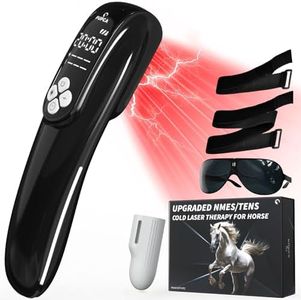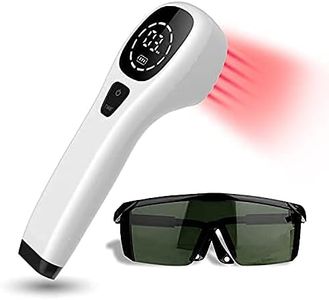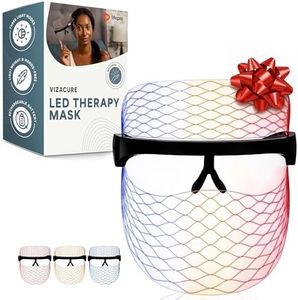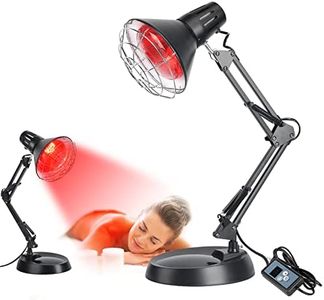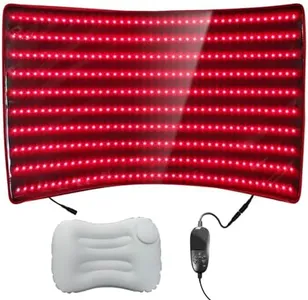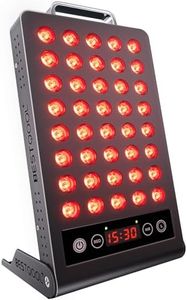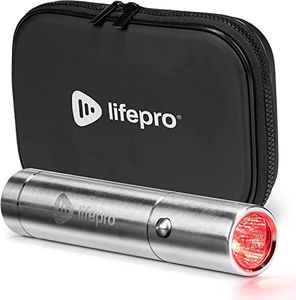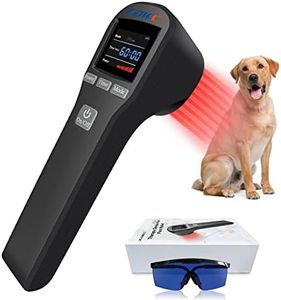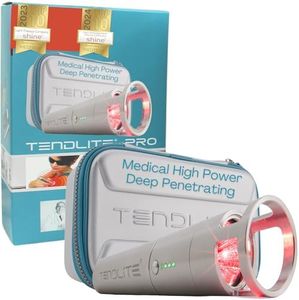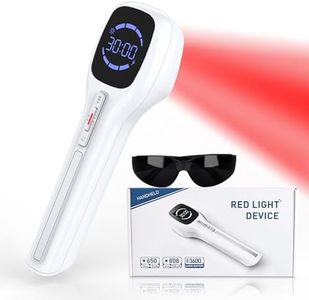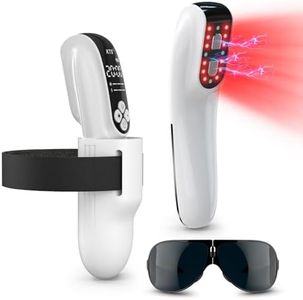10 Best Cold Laser 2025 in the United States
Our technology thoroughly searches through the online shopping world, reviewing hundreds of sites. We then process and analyze this information, updating in real-time to bring you the latest top-rated products. This way, you always get the best and most current options available.

Our Top Picks
Winner
Terraquant TQ Solo Ultimate Cold Laser System
Most important from
23 reviews
The TerraQuant TQ Solo Ultimate Cold Laser System is a powerful tool for those seeking effective cold laser therapy. One of its standout features is the combination of three different wavelengths: a strong 15,000mW peak power at 905nm, along with 875nm and 660nm LEDs. This diverse output allows for versatile treatment options, addressing various conditions more effectively than lower-powered devices. The included Laser-Therapy.us protocol library is another advantage, providing a dynamic, user-friendly guide tailored to individual patient needs, which is especially helpful for those new to laser therapy.
Portability is a key strength of the TQ Solo, making it easy to use in different settings, whether at home or in a clinical environment. The system's optional accessories, like the light pipe adapter for targeted therapies and an adjustable stand for hands-free operation, offer great flexibility in treatment applications.
The TerraQuant TQ Solo is an excellent choice for individuals or professionals looking for a robust cold laser system that combines power, portability, and precision. Its comprehensive support and adaptable protocols make it particularly appealing to those committed to achieving effective therapy results.
Most important from
23 reviews
Multi Radiance TQ Solo Cold Laser System
The Multi Radiance TerraQuant TQ Solo Cold Laser System is designed for individuals seeking effective pain relief and inflammation control through cold laser therapy. One of its key strengths is the use of Super Pulsed technology that combines three different wavelengths, allowing for a versatile approach to treatment. This enables users to customize their therapy with three frequency settings: 5Hz, 50Hz, and a variable setting between 1000Hz to 3000Hz, which caters to various pain depths and types. Additionally, the inclusion of a free subscription to the Laser Therapy University website provides valuable educational resources, helping users enhance their treatment protocols.
Portability is another benefit, as the device weighs just 1 pound, making it easy to carry and use in various settings. The bonus eBook on acupuncture points further adds to its utility by integrating additional healing techniques.
The TQ Solo is well-suited for those looking to explore cold laser therapy for pain management and inflammation treatment, especially if they appreciate educational support and additional resources. However, it's important to weigh this against personal needs and expectations before purchasing.
GOVW Cold Laser Therapy for Dogs, 4x980nm+4x810nm+16x660nm, Cold Laser for Horses, Veterinary Laser Therapy Machine, Pet Laser Therapy, Cold Laser Therapy Pain Relief Device for Animals Like Cats
Most important from
122 reviews
The GOVW Cold Laser Therapy device is designed primarily for pets like dogs, cats, and horses, making it a versatile choice for animal owners looking to provide pain relief and support recovery at home. One of its key strengths is the combination of three different wavelengths (660nm, 810nm, and 980nm), which allows it to effectively treat a variety of conditions, from surface skin issues to deeper joint pain. The adjustable power levels and treatment modes give users flexibility to tailor the therapy to their pet's specific needs, which is great for addressing a range of injuries and ailments.
Another advantage is its portability; at just 1.6 pounds and compact in size, it can be easily used in different locations around the home. This might be particularly appealing for pet owners who want to reduce veterinary visits and costs. The inclusion of a user manual and setup instructions also makes it more user-friendly.
On the downside, the device requires consistent use over several weeks for noticeable results, which may demand patience and commitment from pet owners. Additionally, while the device is equipped with safety features, the effectiveness of cold laser therapy can vary from one animal to another, meaning that owners might not see the same results for every condition or pet. The price point and availability might also be worth considering, as it’s positioned as a home-use version of professional veterinary equipment. This product could be particularly beneficial for pet owners seeking a non-invasive treatment option for chronic pain or injuries, but it may not be suitable for all conditions or every pet.
